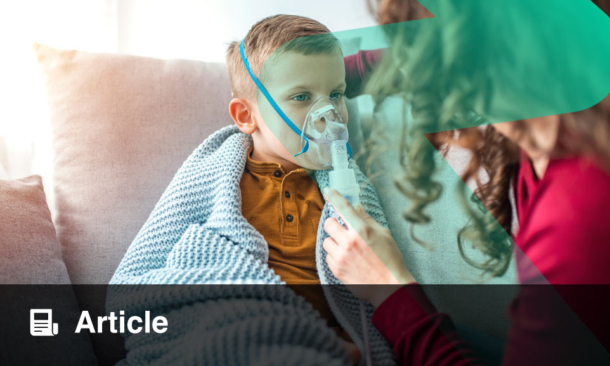Abstract
Pediatric lung transplantation has been performed in thousands of children with end-stage pulmonary disease internationally over the past 4 decades. Whilst significant improvements have been made in pre- and post-transplant care, waitlist mortality for children awaiting lung transplantation remains high. Specific challenges exist in pediatric lung transplantation, particularly in relation to a shortage of suitable pediatric donors. This narrative review will summarize recent advancements in surgical procedures and immunosuppression strategies in lung transplantation, focusing particularly on the evidence for these in the pediatric population, where this exists.
Key Points
1. Indications for lung transplantation in children have changed significantly in recent decades, with cystic fibrosis no longer the most frequent indication for transplantation and pulmonary arterial hypertension now the most common indication worldwide.
2. Demand for donor lungs continues to exceed supply, and several promising advancements have been made with the potential to significantly increase the pool of donor lungs available to children, including downsizing donor lungs and ex vivo lung perfusion.
3. Chronic lung allograft dysfunction resulting from antibody-mediated rejection remains one of the greatest challenges in pediatric lung transplantation. Novel therapies to prevent and treat antibody-mediated rejection, such as human leukocyte antigen desensitization, may help to improve survival post-lung transplantation.
INTRODUCTION
Since pediatric lung transplantation (LTx) was first successfully performed in October 1987,1 it has become an established treatment for end-stage respiratory and pulmonary vascular disease. By June 2018, a total of 2,777 either lung or heart-lung transplants had been recorded worldwide in the International Society for Heart and Lung Transplantation (ISHLT) registry.2
Specific challenges exist in pediatric LTx owing in part to the reduced pool of size-matched donors, expected somatic growth, and the developing immune system during childhood. However, recent advancements in transplant care have improved both the chances of receiving suitable organs and outcomes for pediatric LTx, which is now associated with a median 1-year conditional survival of 9.1 years.3 These strategies include surgical downsizing of donor lungs to address size mismatch, ex vivo lung perfusion of marginal donor lungs, the use of extracorporeal membrane oxygenation (ECMO) to bridge patients to transplantation, and improvements in the recognition, prevention, and treatment of antibody-mediated rejection (AMR). Here, the authors will discuss the available evidence for these advancements and highlight promising areas for future research in pediatric LTx.
A literature search was carried out on PubMed to identify relevant studies using the headings “lung transplant” and “indications,” “lung volume reduction,” “downsize donor lungs,” “ex-vivo lung perfusion,” “living-donor lobar lung transplantation,” “ABO-incompatible,” “storage,” “ECMO-bridge,” or “antibody mediated rejection.” Only English-language abstracts were screened for applicability.
TRENDS IN THE ERA OF HIGHLY EFFECTIVE TREATMENTS FOR CYSTIC FIBROSIS
Indications for pediatric LTx have changed significantly in recent decades. Historically, cystic fibrosis (CF) was the most common indication, accounting for 60% of pediatric LTx worldwide. This far outnumbered the then second most common indication, pulmonary vascular disease, which accounted for 17% of pediatric LTx until early 2019.4 However, recent international data have demonstrated a significant decline in the number of pediatric LTx being performed for CF.2 Whilst this trend began in 2009 and is partly due to improvements in multidisciplinary care,5 there has been a notable decline since the advent of highly effective CF transmembrane conductance regulator modulator therapy (CFTRm)6 which has transformed outcomes for patients with CF. However, access to these expensive CFTRm is not universal. There are notable disparities internationally, particularly in low- and middle-income countries,7 where CF is likely to remain a significant indication for pediatric LTx.8
In contrast, increasing numbers of children are undergoing LTx for pulmonary arterial hypertension (PAH) and interstitial lung disease.3 Due to improvements in management using pulmonary vasodilators, balloon atrial septostomy, and Potts shunt, increasing numbers of children with PAH are surviving to transplantation. An increasing proportion requires bridging on ECMO,3 suggesting not only that these children are more unwell, but that there is growing confidence in managing such patients.
DOWNSIZING DONOR LUNG TRANSPLANTATION
Size matching in LTx is of paramount importance. Size mismatch is a significant barrier to LTx. It was the primary reason for lung offer declines in one study,9 and contributes to the longer waitlist times in children than in adults, with associated increased mortality.10-12 Improving the availability of suitable donor lungs is a high priority as demand continues to exceed supply.
In recent years, an increasing number of LTx have been performed without a concomitant increase in the donor pool. This suggests that there has been better utilization of available organs.12 To this end, downsizing of donor lungs has been successfully used, with growing data to support its use. These largely involve lobar resections or wedge resections of peripheral lung tissue, usually at the discretion of the transplanting surgeon. The reported complication rates from downsizing donor lungs are low.13,14 These include bronchial stenosis and atelectasis for lobar resections, and air leaks and pleural effusions due to the larger resection borders associated with wedge resections.15
The potential benefit of downsizing donor lungs in pediatric LTx has been demonstrated through several small retrospective studies. Collectively, these have demonstrated comparable outcomes in terms of survival, post-operative complications, and lung function,13-17 compared with children receiving full-sized lungs. Whilst there have been reports of increased ICU and hospital stays in patients with reduced-size grafts, further analysis in one study suggested this may be due to greater pre-transplant illness severity in children receiving reduced-size lungs.15 Overall, this supports the feasibility of using size-reduced donor lungs for LTx in children, which has the potential to increase the available donor pool and reduce waitlist times and mortality.
EX VIVO LUNG PERFUSION
The “ideal” donor criteria, namely a clear chest radiograph, a partial pressure of oxygen to fraction of inspired oxygen (PaO2/FiO2) ratio >300 mmHg, a clear chest radiograph and bronchoscopy, and minimal ischemia time,18 are challenging to satisfy. This results in less than 30% of available donor lungs being utilized.19 Consequently, the use of marginal donor lungs that do not meet these criteria is increasingly considered. Ex vivo lung perfusion (EVLP) is an innovative technique for assessing and potentially rescuing marginal donor lungs.20 EVLP is performed by normothermic perfusion of the lungs with a bloodless solution containing oxygen, protein, and nutrients. The proposed mechanisms of action of EVLP include reducing extracellular lung fluid, reinflating areas of atelectasis, and reducing intrapulmonary shunt and circulating cytokines.21
There have previously been concerns about the risk of primary graft dysfunction (PGD) using marginal donor lungs. However, increasing evidence from adult LTx data suggests that EVLP in marginal lungs is safe and associated with outcomes comparable to lungs that satisfy the standard criteria for transplantation. In the 2011 study from the Toronto Lung Transplant Programme, 20 lungs that underwent EVLP for 4 hours had similar rates of PGD, 30-day mortality, and ICU and hospital stay compared with standard lung transplantation without EVLP.22 Whilst one prospective multicenter trial found higher rates of PGD in those undergoing EVLP at 24 hours, this difference was not evident at 48 and 72 hours.23 Long-term outcomes following EVLP, such as chronic lung allograft rejection (CLAD) and mortality, are comparable at 9 years of follow-up. By enabling greater use of marginal donors, the use of EVLP doubled the number of adult LTx performed annually in Toronto, Canada, from 50 to 100 per year, without an increase in available donors.24 Thus, EVLP has the potential to significantly increase the utilization of available donor lungs that might otherwise have been rejected for transplantation.
There is only one reported case of using EVLP in pediatric LTx to date, which may reflect the lack of available pediatric-sized EVLP systems. In this case, a 3-year-old child with pulmonary vein stenosis was successfully transplanted from a 3-year-old donation after cardiac death (DCD) donor treated with EVLP. At the time of the report, the recipient was well at 1-year of follow-up from a respiratory perspective.25 Greater evidence of the use of EVLP in children is needed to demonstrate its safety. One of the greatest potential advantages of EVLP is that it could extend total preservation time to allow an increased pool of donors across a greater geographical distance, which could be particularly advantageous in the pediatric population, where the donor pool is already scarce.
LIVING-DONOR LOBAR LUNG TRANSPLANTATION
An alternative strategy to address the shortage of cadaveric lung donors in children is the use of living-donor lobar lung transplantation (LDLLT). Conventionally, this involves transplanting the right and left lower lobes from two living, healthy donors each. LDLLT has primarily been used in patients who might not otherwise survive on the waiting list for a cadaveric donor. It was first performed over 30 years ago in the USA. However, since the introduction of the Lung Allocation Score to prioritize transplantation in those with the most urgent need, the use of LDLLT in the USA has fallen and it is not performed in many countries worldwide.
The greatest recent experience of its use is in Japan, where comparable outcomes have been seen between LDLLT and cadaveric LTx (CLT).26,27 In a multicenter study comparing 70 children undergoing LDLLT with 24 children undergoing CLT over 21 years, comparable 5-year, 10-year, and CLAD-free survival was seen between groups.27 Similar outcome data were seen in a study describing the decade-long experience of LDLLT in California, USA, which included 39 pediatric recipients. Despite the critical condition of these patients, survival rates were 70%, 54%, and 45% at 1, 3, and 5 years, respectively, comparable to ISHLT CLT data.28 Mature adult lobes in pediatric LDLLT recipients have also shown growth on CT scanning, coupled with a median increase in forced vital capacity and forced expiratory volume in 1 second of approximately 60% and 40%, respectively.26 However, LDLLT may not apply to children of all ages, as children under 7 years of age may have a higher risk of early mortality.27
The greatest concern regarding LDLLT is the risk to the two donors. Reported post-operative complications in donors range from approximately 30–40%.29,30 These include pneumothorax, pleural effusion, chylothorax, and delayed pulmonary fistula.30 There are a few reports of long-term donor outcomes. In one study of 174 living lung donors with a median 12-year follow-up, whilst many donors reported high quality-of-life scores (QOL), low response rates were seen in those donors whose recipients had died. Of those who responded, QOL scores were lower than for donors whose recipients had survived.29 This suggests that there may be over-reporting of positive QOL scores in those donors whose recipients had better outcomes. Furthermore, first-degree relatives are frequently used as donors, which raises ethical dilemmas as care is required to prevent coercion of potential donors. Concerns have been raised about the rates of recipient airway complications with LDLLT. Whilst the overall rates of airway complications are similar between LDLLT and CLT, the pattern of airway complications differs. Bronchial stenosis, particularly of lobar or segmental bronchi, is more common with LDLLT, often necessitating earlier intervention with airway stenting, and is associated with a detrimental impact on survival.31 These concerns have limited the use of LDLLT worldwide.
ABO INCOMPATIBILITY
Major ABO-incompatible LTx is largely not performed due to concerns about interactions between donor antigens and the recipient’s anti-A or anti-B antibodies, resulting in AMR.32 However, evidence from other solid organ transplants in children and rare case reports in LTx suggests that ABO-incompatible LTx is feasible. This is potentially transformative for addressing long waiting times on the transplant list, especially for infants and younger children. This has been clear in pediatric cardiac transplantation, where the utilization of ABO-incompatible donors has been found to have excellent early and long-term outcomes which are comparable to using ABO-compatible donor hearts. The use of ABO-incompatible organs has become commonplace in infant cardiac transplantation and has significantly reduced the waitlist mortality from 50% in the early 1990s to 15% in children under 6 months of age.33
To date, most reports of ABO-incompatible lung transplants have been performed accidentally, but outcomes and mortality have been demonstrated to be similar to ABO-compatible LTx.32 There have been two pediatric case reports to date of deliberate ABO-incompatible LTx, both of whom had positive outcomes. The first was a 32-day-old infant with blood group A and surfactant protein B deficiency who received a successful transplant from a blood group B DCD donor.34 The second was a 14-year-old girl with blood group O who underwent living donor transplantation, where one lobe was donated by her blood group B father.35 Both children remained well post-transplantation with no evidence of graft rejection. Thus, it is plausible that ABO-incompatible LTx may be safe, and that its use could significantly increase the available pediatric LTx donor pool.
STORAGE TEMPERATURE OF DONOR ORGANS
Debate remains over the optimum storage temperature and the impact of this on time from harvesting to transplantation of donor organs. Currently, many organs are stored on ice at approximately 4 °C with the aim of transplantation within 6–8 hours. However, in vitro evidence suggests that static storage at 10 °C results in better maintenance of mitochondrial health and cellular membrane function compared with the conventional ice cooler method. Using a pig model, prolonged storage at 10 °C for up to 36 hours led to greater mitochondrial preservation as demonstrated by raised metabolites associated with mitochondrial health and lower airway pressures, higher lung compliance, and better oxygenation capabilities compared to conventional storage at 4 °C.36 A prospective, multicenter, non-randomized trial assessed the impact of overnight storage at 10 oC in 70 patients compared with 140 matched controls. Despite longer total preservation time and more DCD donors in the 10 oC group, there were no significant differences in PGD, time in ICU or hospital, or 30-day and 1-year survival.37 These results are encouraging and suggest that lung preservation time could be extended to between 12–18 hours without compromising patient outcomes. The ability to store donor organs at 10 °C overnight could reduce the need to perform out-of-hours LTx to improve safety and increase training opportunities, changing LTx from a time-pressured emergency to a planned procedure. Further evidence is needed to demonstrate the safety of prolonged storage of organs, both in pediatric and adult populations.
EXTRACORPOREAL MEMBRANE OXYGENATION BRIDGING TO TRANSPLANTATION
Improvements in ECMO technology and administration have resulted in increased use of venovenous ECMO to bridge patients to lung transplant. There is growing evidence to support the use of ECMO as a bridge to pediatric LTx. Using data from the United Network for Organ Sharing (UNOS) in the USA from the previous 2 decades, several studies have demonstrated that children who are bridged to LTx on ECMO had similar 1- and 5-year mortality to patients who either required mechanical ventilation (MV) only or neither MV nor ECMO.38,39 However, children who had either ECMO or MV prior to transplantation had a two-to-three times higher odds of mortality before discharge following LTx, which likely reflects their increased severity at listing as reflected in their higher Lung Allocation Score. There appears to be an increased risk of immediate post-transplant complications which stabilize over time.38 In one study, however, just over 50% of those children on ECMO did not undergo LTx as they either died or were removed from the waitlist due to worsening clinical status, thus questioning the success rates of ECMO as a bridge to transplantation.39 This may be of greater impact in younger children, as demonstrated in a study of 15 children with a median age of 1.3 years who were bridged on ECMO, in whom only six (40%) survived to hospital discharge.40
Recent advancements in the use of single-site, double-lumen catheters have enabled ambulatory, awake venovenous ECMO to be used in LTx. This has the advantage of enabling patients to talk, and continue with physiotherapy and rehabilitation pre-transplant, which has an important impact on post-transplant recovery. Although there are only limited case reports to date of the use of ambulatory ECMO in children, survival rates to LTx on ambulatory ECMO are encouraging, with approximately two-thirds of patients surviving to transplantation, albeit in only a small handful of patients.41,42 Of 10 patients aged <21 years who received ECMO pre-transplant in one study, six survived to transplantation, of whom three were on ambulatory ECMO and three were non-ambulatory. The authors concluded that improved survival of patients requiring ECMO is likely due to better LTx selection criteria combined with technological advances and growing confidence in the use of ECMO in critically ill patients with severe lung disease.43
Whilst data for the use of ECMO as a bridge to pediatric LTx are interesting, there are many unanswered questions. It is unclear how long ECMO should be continued for and whether there are increased risks from prolonged ECMO use in pediatric LTx patients, such as HLA sensitization from repeated blood product transfusions. There are no clear indications for when to commence or discontinue ECMO, and as such, decisions should be made based on individual criteria, working closely with the multidisciplinary team, the patient, and their family.
PREVENTION AND TREATMENT OF ANTIBODY-MEDIATED REJECTION
Immune activation by donor-specific antibodies in lung transplant recipients to human leukocyte antigen (HLA) in the donor lung plays an important role in the development of antibody-mediated rejection (AMR) and early CLAD, which remains the leading cause of reduced survival following LTx.44,45 Preformed alloantibodies to donor HLA pose a significant challenge in LTx. Advancements in solid-phase immunoassays for antibody detection have enabled the development of a calculated panel-reactive antibody (cPRA) to identify patients who are HLA-sensitized. This provides an estimate of the likelihood of identifying a crossmatch-compatible donor with a higher cPRA, indicative of a reduced donor pool. HLA-incompatible LTx in adults is associated with higher mortality due to longer waitlist times and increased risk of hyperacute rejection in the immediate post-transplant period,46 along with subsequent AMR and CLAD, and consequently is avoided by many centers.
A small number of adult LTx centers have sought to “desensitize” HLA antibody-positive patients prior to transplantation. Although different combinations of immunosuppressive agents have been used in different studies, in broad terms these regimens aim to reduce the number or function of antibody producing cells with agents such as rituximab to target B cells, and bortezomib to target plasma cells; and reduce levels of circulating antibodies through antibody removal, for example using plasmapheresis, or antibody destruction or neutralization, for example using intravenous Ig. However, there are limited data on HLA desensitization in LTx, with great variation in desensitization protocols used and no consensus on the threshold at which DSAs are significant,47 with one study defining a DSA mean fluorescence intensity of 5,000 as “high” whilst another study defined this as “low.”48,49 This may reflect that the level of increase of a single DSA value is more clinically important than a cumulative DSA value.
The optimal timing of desensitization is also unclear. Pre-transplant desensitization risks a lag between desensitization and transplantation, with the potential for antibodies to redevelop. Perioperative desensitization commenced at the time of transplant risks increasing cold ischemia times. The majority of tested regimens to date have involved perioperative desensitization with overall encouraging results. Excellent long- and short-term outcomes following perioperative desensitization have been seen in several studies, with no significant differences in PGD Grade 3 after 72 hours and comparable 30-day survival, 1-, 5-, and 8-year graft survival,50 median allograft- or CLAD-free survival, and forced vital capacity and forced expiratory volume in 1 second at follow-up.50-52
In comparison, there has only been one study of pretransplant desensitization in adult LTxs to date. This demonstrated that in highly sensitized adults with cPRA of at least 80%, there was no significant decrease in Class I or II PRA or cPRA using a multimodal pretransplant desensitization regimen consisting of plasmapheresis together with intravenous Ig, methylprednisolone, bortezomib, and rituximab.53 This may suggest that the success of HLA desensitization may vary according to the degree of sensitization. However, each of the above studies has been performed in small numbers of adult transplant patients. Further work is needed to ascertain not only the short and long-term outcomes following desensitization regimens, but also the safety and tolerability of these often aggressive treatment regimens, which to date only a few studies have reported.50,53 Furthermore, consensus over which patients should be desensitized, the timing of this, and the optimal desensitization protocol has yet to be reached.
There is a paucity of data on the effectiveness of desensitization regimens in children, with no reported trials to date. At the authors’ center, they have successfully performed perioperative desensitization using plasma exchange and anti-thymocyte globulin in an 18-month-old child with PAH and interstitial lung disease who had positive DSAs identified at transplantation. Whilst preformed DSAs remained negative post-transplantation, this strategy did not prevent the formation of de novo DSAs, thought to be triggered by post-transplant cytomegalovirus infection.54 Nonetheless, this demonstrates the feasibility of performing HLA desensitization in young children and the need to further evaluate this approach.
Whilst there is limited evidence to inform the treatment of AMR in patients undergoing LTx, lessons can be learned from the treatment of other solid organ transplants. Promise has been shown in the reduction of DSAs following LTx with the use of tocilizumab, an IL-6 inhibitor, which has previously been used in patients who have had renal transplantation. In the first reported use of tocilizumab in patients with LTx, using a dosing strategy derived from the treatment of rheumatoid arthritis, tocilizumab was associated with greater clearance and lower recurrence of existing DSAs and a lower frequency of de novo DSA development. Graft failure rates were remarkably lower in those who received tocilizumab at 11.1% compared to 52.6% in controls.55 Whether these findings can be replicated in larger studies remains to be seen.
CONCLUSION
In summary, in recent years, there have been significant changes in pediatric LTx, most notably in the changing indications for transplantation since the reduction in referrals for CF in the era of highly effective CFTRm. Whilst demand for donor lungs continues to exceed supply, several advancements have been made which have the potential to increase the donor pool and improve waitlist mortality significantly. Some of these, such as downsizing donor lungs, have already been successfully used in pediatric LTx. In contrast, others, such as EVLP, have shown promise in adult patients but require further evaluation before becoming adopted into pediatric practice. CLAD remains the greatest cause of reduced survival following LTx, and novel therapies to reduce AMR, such as HLA desensitization, may help to improve survival post-LTx. Addressing these problems through future research has the potential to significantly improve survival in children undergoing LTx.







